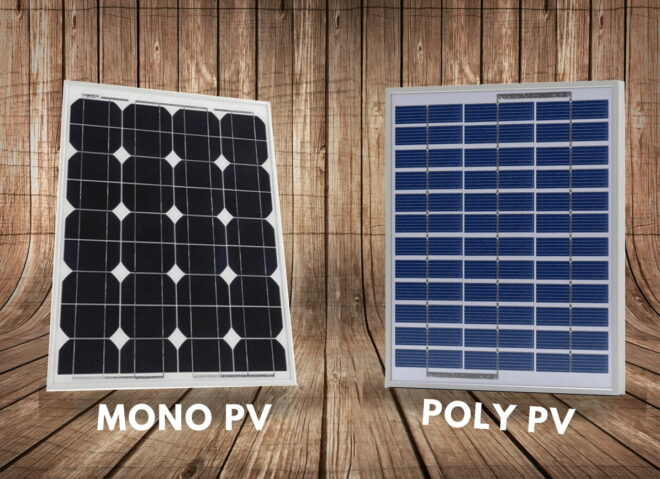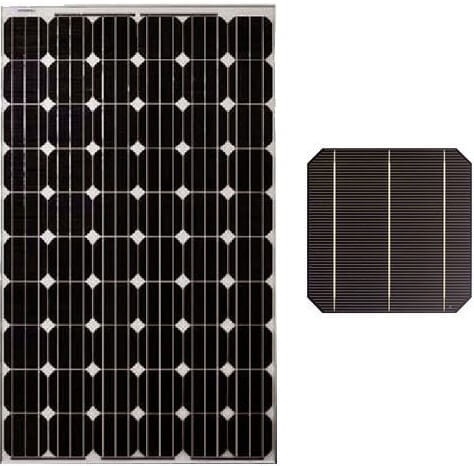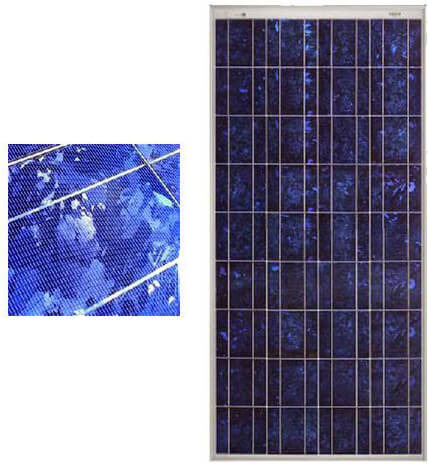This article was updated on June 08, 2023
Solar energy has become enormously popular as the most economical source of energy.
This leaves many people to wonder how solar photovoltaic is efficient in providing “green energy” yet so inexpensive.
To answer this question, it needs understanding how solar panels are built and their components and how solar panels work.
The solar panels in the market today are made of a monocrystalline, polycrystalline or thin film of silicon.
How Solar Panels Are Made
There are many components that made up solar photovoltaics, but the most important of them are the silicon cells.
Silicon which is a nonmetal element that possesses conductive properties and with an atomic number of 14 in the periodic table.
The conductive property of this element is what produces the solar panels the ability to turn the sunlight into a power source in the form of electricity.
When the light hits the panels, it interacts with the silicon cell. The electrons are set into motion and start the flow of electricity. This whole process is known as the “photovoltaic effect”.
We have to understand however that not only silicon cells are responsible for providing electricity in your homes.
The whole set up includes wiring and metal casings. They allow the electrons in the solar cells to escape and provide effective power.
There are different types of silicon cells based on their various cellular structures. There is the single cell called monocrystalline, polycrystalline, or the amorphous form commonly correlated with a thin film in solar panels.
Monocrystalline solar panels
The whole manufacturing process includes cutting the silicon wafers and placing them together in the panels to assemble a solar panel.
For a long time, this is the only type of silicon panels produced commercially.
They are more efficient than polycrystalline and thin film solar cells. However, producing them is more labor-intensive. Hence, they are also more expensive than the polycrystalline type.
The crystal framework is even and more steady color without grain marks giving it the highest purity and more efficiency.
They also have the distinct black look and are more aesthetically appealing like what you can find in Solarquotes.com
Polycrystalline solar panels
Instead, they are manufactured by melting together many silicon crystals and forming them together.
The panel is made by melting the silicon molecules and the refusing them together. The polycrystalline panels are less efficient than monocrystalline and less expensive.
They have the distinct bluish hue and are often associated with the panels at LG Solar.
Amorphous Forms
The amorphous silicon cells are found in thin film solar panels. They are non-crystalline and are attached instead to a medium like plastic, metal or glass.
They are created by an evaporation process of chemicals on a substrate like a glass sheet. This type of solar panels is bendable and lean.
In spite of their versatility, they are however less efficient than monocrystalline and polycrystalline solar panels.
Due to its flexibility and it is light in weight, they are used on unique installations like curved roofs and automobiles.
Module Assembly
In general, all solar panels consist of solar cells that have a glass layer in front and a protective back sheet on its behind.
The glass casing provides protection and durability to the silicon PV while the coming up with a new bifacial design.
The solar panels here are both exposed in the front and backside, and back sheets are no longer required. Some panels do not require frames anymore.
Here the solar panels are sandwiched between two pieces of sturdier materials like glass.
How Do Solar Panels Work?
There are many applications of solar energy that we can see every day. Solar panels can be seen in many homes and roadside signs and even help to power spacecraft. But how do solar panels work?
To put it simply a solar panel works by allowing particles of light containing photons to activate electrons.
This reaction generates a flow of electricity called photovoltaic, which means the conversion of sunlight into electricity.
The solar panels are made of many smaller units called photovoltaic cells. Each of these photovoltaic cells is packed in between slices of silicon, a semiconducting material.
For the photovoltaic to operate, it needs to establish an electric field where the opposite charges are separated.
To produce an electric field manufacturer like Tindo Solar seed. The silicon with material like phosphorus on the top layer of the silicon adding extra electrons in the top layer.
In the bottom layer, boron is added which do the opposite, reducing the electrons.
These components made up the electric field at the intersection between the silicon layers.
When a photon hits, an electron free, and the electric field pushes the electron out of the silicon at the junction.
The metal conductive plated which are located on the sides collect these electrons and transfer them into the wire, turning it into usable power.
Improvements on Solar Panels
Aside from the bifacial design, much effort is put into researching on improving the existing technologies in the monocrystalline and polycrystalline cells.
Another priority is concentrating radiation on fewer cells to reduce the overall cost and replace the expensive photovoltaic cells with a more cost-effective alternative like cheap reflectors and Fresnel lenses.
However, as of now, it remains fruitless because they don’t have a solution yet for the loss of power in the cells when the temperature increases.
Conclusion
More and more efforts are made to put solar energy at the forefront. It is easy to understand why it is a renewable resource, and it is free.
As more people are switching into an alternative energy source, understanding how solar panels work and their components can make them decide on a better option for their homes.
It can also help those who have not converted yet to consider solar energy as an option.




